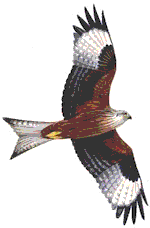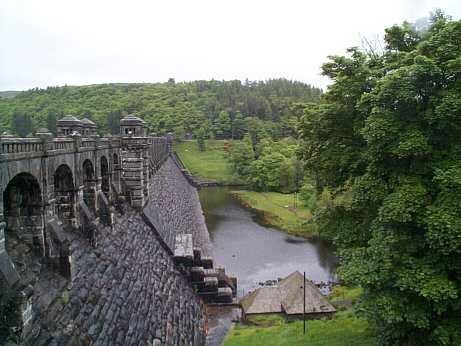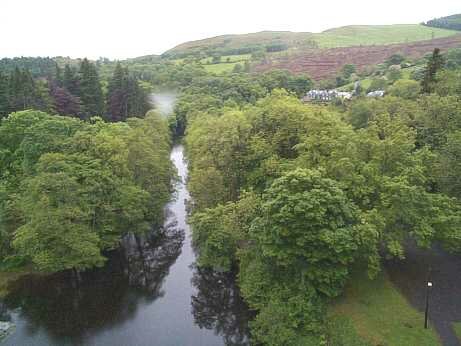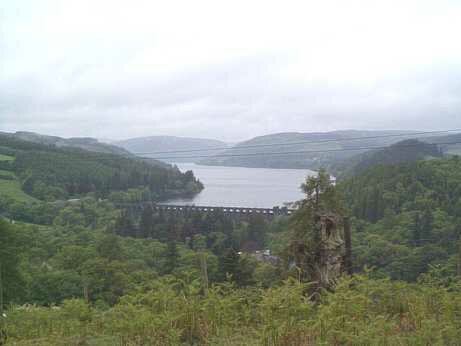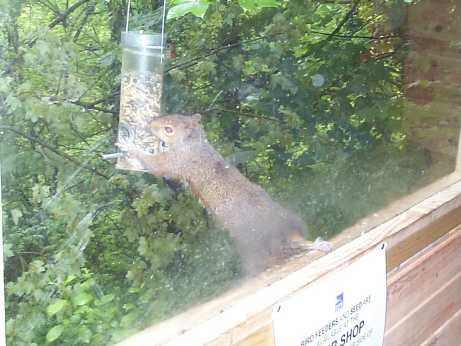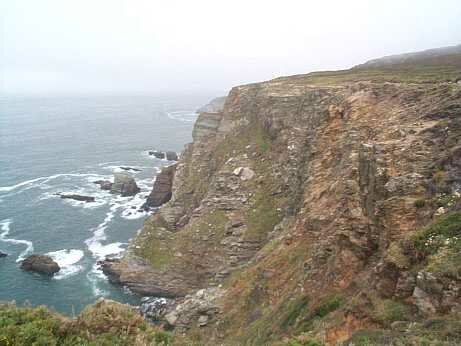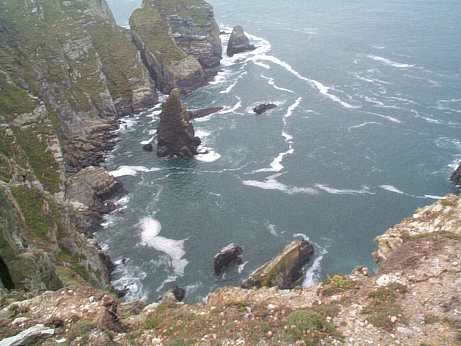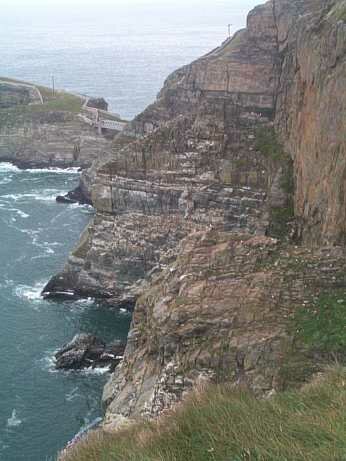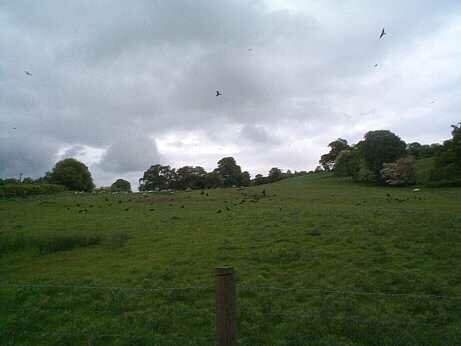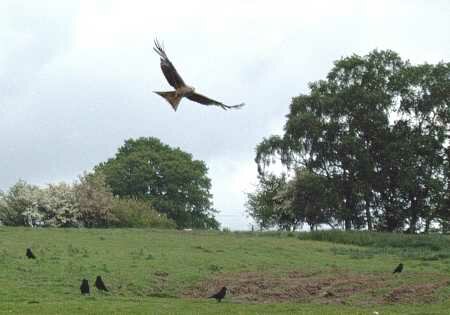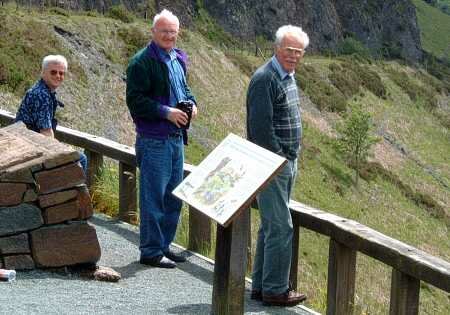A long Friday to Sunday weekend with a two car group of South East Essex RSPB members consisting of Keith Crees (Group Leader), Stephen Anderson (Treasurer), Jim Hillier (Field Trip Organiser) and Graham Mee (Website author).? Friday 2nd June 2000 Lake Vyrnwy is a very picturesque reserve consisting of heather moorland, woodland, meadows, rocky streams and a very large reservoir which attracts a wide variety of wildlife to this area set at the southern end of the Berwyn Mountains. Dippers and Kingfishers, nest by the lake and rocky streams, while Ravens and Buzzards can be found on the moorland. Lake Vyrnwy is very popular with birdwatchers for offering a full range of facilities. Lake Vrynwy Location Leaving Vrynwy late afternoon we set off for our bed & breakfast in Betws-y-coed, booked for the next two nights. This turned out to be an extremely lucky choice as the staff were very friendly, the rooms clean and food superb. Betws-y-coed is a very good location for visiting all the major wildlife areas in this part of Wales. Full thanks must go to Sue, Steve's wife, for making this choice. Saturday 3rd June 2000 South Stack Location Leaving South Stack on the A5 and then taking the A5025 off left we proceeded to Amlwch and Point Lynas on the north coast of Anglesey. Again our luck was with us and within five minutes of arriving we were looking at a pair of Black Guillemot in full breeding plumage. Equally beautiful was the sight of a Gannet just off the cliffs gliding over the waves. Point Lynas consists of an exposed headland with excellent sea views, maritime heath and paths around the headland. Amongst the rarities that have been recorded from this location are: Albatross, Sooty, Great and Cory's Shearwaters, Storm Petrel, Leach's Storm Petrel, Velvet Scoter, Long-tailed Skua, Mediterranean, Iceland, Little and Sabine's Gulls, Red-breasted Flycatcher and Lapland Bunting. Amlwch is usually at its best in the Autumn. Amlwch Point Lynas Location We returned on the A5025 across the Menai Bridge and then took the A55 through to Conwy to visit the relatively new RSPB reserve here. Due to lack of time only a quick visit was possible but the location looked extremely promising for wintering Geese and wildfowl. The Conwy reserve was created by the RSPB following the construction of the Conwy tunnel. Shallow pools next to the estuary provide ideal feeding and roosting places for ducks, geese and some wading birds. From the visitor centre there is an excellent view of one of the pools, letting you get really close to the birds. There is a nature trail from the visitor centre leading you to hides with views over the estuary and the magnificent Conwy Castle. Sunday 4th June 2000 Situated in a beautiful setting at the confluence of the Marteg River with the River Wye in the Cambrian Mountains of Mid Wales, Gilfach is locally unique because of its wide variety of habitats: high moorland to enclosed meadow; oak woodland to rocky upland river. Because of this variety the farm supports a tremendous abundance of birds and animals within a comparatively small area. This richness of wildlife has adapted to living in the various habitats created over the centuries through the practice of traditional farming. The farmyard, with its Welsh longhouse, is central to the reserve. The house is a traditional building in Wales, developed over many centuries from a wooden cruck-framed medieval hall. The Gilfach Longh House forms the perfect complement to the Education and Visitor Centre which has been created through the conversion of the 18th century stone barn opposite. The Centre utilises a 'high-tech' approach to the interpretation of the wildlife of the Reserve. Nest-boxes fitted with cameras link to a monitor system in the Centre, as does pre-recorded footage of Gilfach's badger and other mammal activity. A gift shop and restaurant area, in addition to other picnic sites, complete the facilities which are accessible to wheelchairs. Gilfach Farm Location After leaving Gilfach our intention had been to visit the RSPB reserve of Dyffryn Woods just south of Rhayader. Fortuitously, as it turned out, the weather turned particularly nasty at this point so instead we drove back to the Gigrin Farm Red Kite Centre arriving 15 minutes before the Kite feeding. The Gigrin is a family run upland sheep farm of approximately 200 acres, owned and farmed by Eithel, Lena, and Chris Powell. The land is 700 feet rising to 1200 above sea level giving us wonderful views of the Wye and Elan valleys. The owners already had a Farm and Nature Trail and a keen interest in both conservation and tourism when in 1994 the Kite Country Project and the RSPB, invited them to be the Official Kite Country Red Kite feeding station. The success of this has encouraged the farm to further increase its commitments to the wildlife on the farm, their latest project being a wetland. Wild ducks, Herons, and a solitary Gadwall have already found it to be to their liking.
Feeding at Gigrin takes place at 2pm GMT and the crows are the first to turn up in the trees around the feeding area and make it quite a noisy affair with the calls of Jackdaws, Carrion Crows and the deep 'cronking' of Ravens, Buzzards and Red Kites circling overhead; Buzzards are far more vocal than Kites, their powerful 'mewing' carrying a long way. As soon as the meat has been put out the crow family start emerging from the surrounding trees. As the first Crows land amongst the meat the Kites go on the offensive. Kites watch and wait their chance to furl their wings and dive in, skimming the ground to snatch a scrap before rising suddenly to escape the beaks of the angry Crows. Many Kites appear to miss their target by a wide margin but are actually intent on flushing meat laden Crows into the air from where they can be mugged by the very best in the business! With the meat clutched in its talons the Kite will make for clear airspace where it can feel secure enough to feed. With its 1.8 metre wings spread out for stability the head turns down to meet with its forward lifted legs. Now the Kite can feed, but must still keep an eye out for other marauding Kites. The farm has four large hides for the viewing of the wonderful Kite feeding spectacle with two suitable for disabled access. The hides are facing east and, being just 30 metres from where the Kites sweep down, give excellent opportunities for photography. During the feeding we counted upwards of 24 Kites and three Common Buzzards. The number of Kites using the feeding station can vary anything from a dozen to 100 or more depending on weather and time of year. Weather plays a big part in this... With the onset of bad weather numbers can increase dramatically, but on blue sky days in spring they may well take their time in coming for their lunch! While seeing large numbers of Kites is an amazing sight some of the better photographic opportunities present themselves when fewer Kites visit as they are far more leisurely in their approach to feeding and frequently float around the area in front of the hides for some time before taking their morsel of choice. The meat being fed: 60 - 80lbs of beef, all fit for human consumption. Great care has been taken to secure a consistent supply of fresh meat! More information on Gigrin and its amazing Kites can be found on its website at: www.gigrin.co.uk. Gigrin Location Our breath taken way by the Kites we headed for home at 4.00pm. The easiest route from this location being the A44 to Hereford, then down to Ross-on-Wye on the A49, taking the A40 signposted to Gloucester and finally the A419 down to the M4. We arrived back at Southend just before 9.00pm the whole wonderful trip being 720 miles.? Species Observed at each Location:?
|
Page last updated:
Web Design Graham Mee. ? Copyright of all pages South East Essex RSPB Local Group. All images copyright of owners
The Royal Society for the Protection of Birds. Registered charity no 207076


